Fall Lawn Care Checklist for Jacksonville, FL
BY LAUREN BRYANT | APRIL 13TH, 2023 | FLORIDA, JACKSONVILLE, LAWN CAREThe cooler weather in the fall is a relief for many Jacksonville residents. Goodbye, high AC bills — hello, pumpkin-flavored everything! You may be able to navigate Conner’s A-Maize-ing Acres like a pro but feel lost when it comes to lawn care.
Florida’s warm-season lawns slow their growth in fall. When winter rolls around, they could stay green or turn brown and dormant — both are normal for North Florida. Though your yard work won’t be as sweaty this time of year, setting your lawn up for success before winter is still essential. Pull out your calendar and follow this fall lawn care checklist for Jacksonville.
In this article, we’ll cover:
- Why is Lawn Care Important in the Fall?
- Fall Lawn Care Checklist for Jacksonville
- FAQ for Fall Lawn Care in Jacksonville
- How a Pro Can Help
Why is Lawn Care Important in the Fall?
You may be tempted to put away your lawn care tools and leave your turf alone until the next growing season. However, that choice could make your spring lawn care much more challenging. Here’s how your lawn benefits from fall lawn care:
- Lawn cleanups prevent excessive debris from suffocating and killing your grass. It also eliminates hiding places for pests.
- Soil testing allows you to plan fertilization and soil amendments far in advance — no need to buy random fertilizer at the last minute in spring that won’t give your soil what it needs.
- Weed, pest, and disease control prevent infestation and ensure your lawn stays in good shape throughout the winter.
- Well-timed fertilization provides the nutrients your grass needs to hunker down during the colder weather.
- Thoughtful irrigation keeps your grass hydrated while not wasting water.
- Tool maintenance means no panicked calls to your busy repair person come spring.
Fall Lawn Care Checklist for Jacksonville
1. Clear Those Leaves
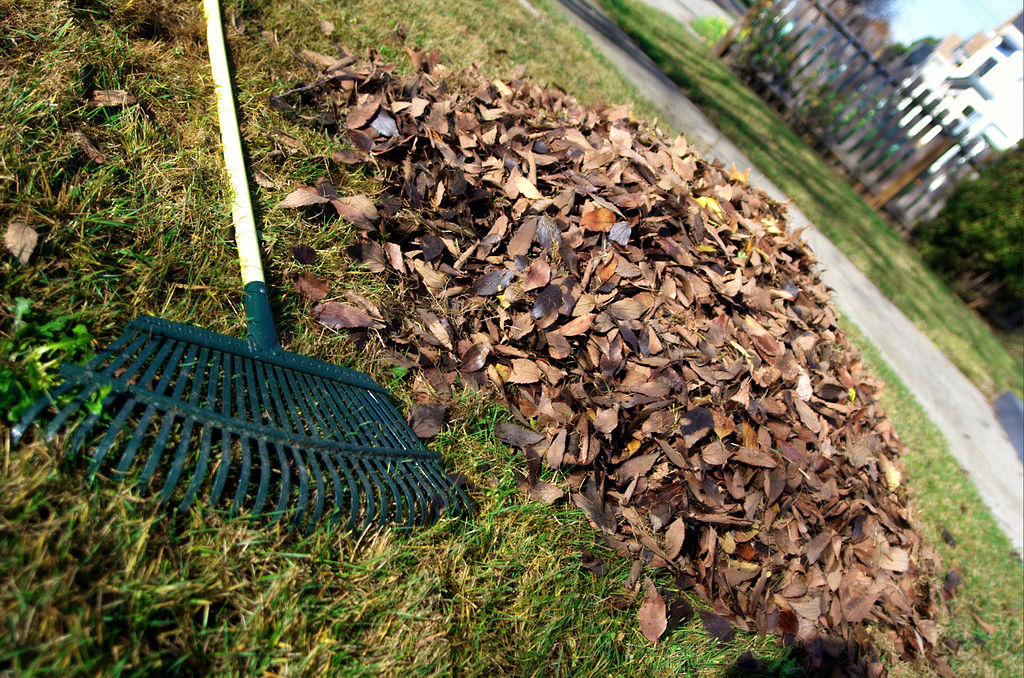
Photo Credit: David Goehring / Wikimedia Commons / CC BY 2.0
Jacksonville’s many deciduous plants drop their leaves as the weather cools in the fall. While those leaves are pretty, too many could smother your lawn. There are a few ways you could deal with them:
- Rake and bag the leaves. This option may be best if the amount is overwhelming or your trees are diseased or pest-infested. However, it isn’t environmentally friendly, and you waste the potential nutrients in the leaves.
- Mulch the leaves directly on your lawn. Leaves still contain plenty of nutrients after they’ve fallen. Rather than let them go to waste, use them to fertilize your lawn. Spread the leaves evenly over the lawn and pass over them with your lawn mower. You can purchase mulching mowers explicitly designed for this purpose.
- Spread mulched leaves around your landscape. Are there too many leaves for your lawn to handle? Spread the love (and nutrient boost) with your flower beds, vegetable gardens, and the base of your trees and shrubs.
2. Test Your Soil
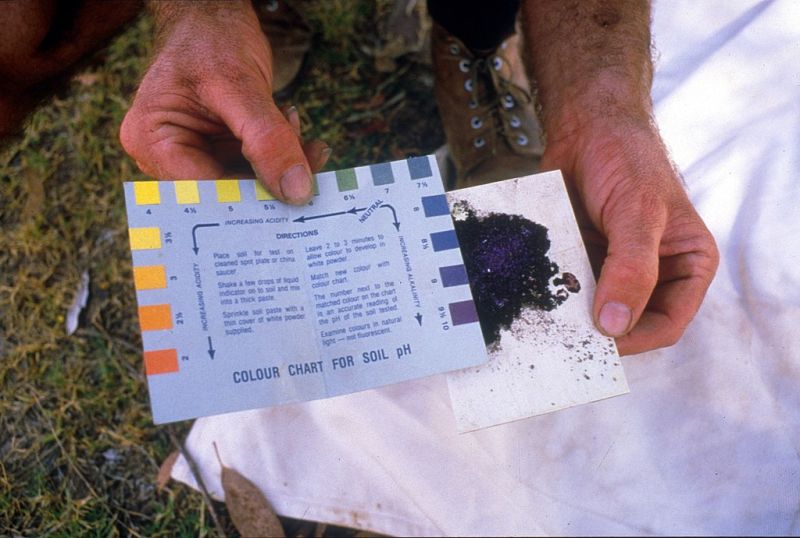
Photo Credit: CSIRO / Wikimedia Commons / CC BY 3.0
Dirt may seem simple on the surface, but it’s anything but that. Soil contains most of the nutrients your grass needs. If you understand what’s already in your soil, you can choose the appropriate fertilizer and soil amendments to help your lawn thrive.
One thing soil tests cover is pH. Soil that is too acidic or alkaline isn’t a friendly environment for your turf and could interfere with proper nutrient absorption. Acidity and alkalinity are measured on a pH scale of 1 to 14. A pH of 7 is neutral — anything above that number is alkaline, and anything below is acidic.
Florida’s average soil pH is 6.1, meaning it’s slightly acidic. However, your soil pH could be higher if you live close to the ocean because shell materials are alkaline. Building materials can also make the soil more alkaline.
Here are the pH preferences for the common Jacksonville turfgrasses:
| Grass Type | Preferred pH Range |
| Bahiagrass | 5.5-6.5 |
| Bermudagrass | 6-6.5 |
| Centipedegrass | 5-6 |
| St. Augustinegrass | 6-7.5 |
| Zoysiagrass | 6-6.5 |
To find out soil pH and nutrient levels, get a soil test from the Duval County Extension Office or another soil testing lab. Use their recommendations when purchasing fertilizer so you don’t oversaturate the soil with nutrients your grass doesn’t need. If your soil pH is too unbalanced, they may recommend soil amendments (lime for acidic soils and sulfur for alkaline soils).
Soil tests can take a few weeks to process, so plan accordingly if you want to know your results before fall fertilization. You don’t need to soil test every year, but it can be helpful if:
- You haven’t tested in a while (or ever)
- You want to plant something new
- You plan to make changes to your soil
- Your lawn health is poor, and you don’t know why
3. Treat Weeds
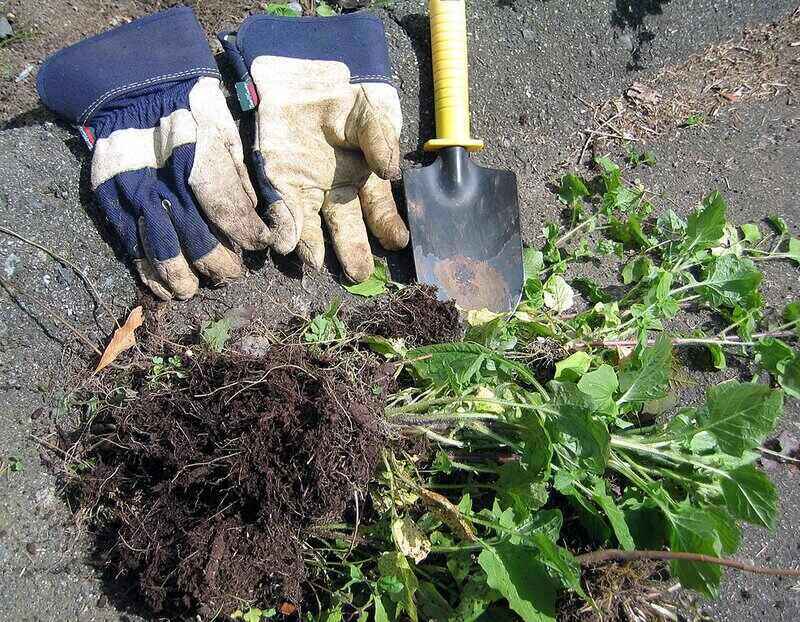
Photo Credit: Ruth Hartnup from Vancouver, Canada / Wikimedia Commons / CC BY 2.0
Have you been keeping track of the weed population in your yard? Weeds compete for the same water, nutrients, and sun as your turfgrass. They also can make your lawn look uneven and lower curb appeal. A healthy, thick lawn can outcompete weeds, but sometimes you must intervene.
There are three ways to deal with Jacksonville weeds:
Manual control: With some gloves and trusty tools, you can pull out weeds by hand. This method is environmentally friendly and won’t harm newly planted grass. However, you need to remove the entire weed. If you leave any roots, tubers, or seeds, the weeds may come back.
Post-emergent herbicides: Once you see the weeds, you can spray them with post-emergent herbicides to kill them. Always follow label directions carefully to keep your other plants safe and ensure the herbicide is compatible with your grass type.
Pre-emergent herbicides: This product prevents weeds from germinating. Use pre-emergent herbicides to get ahead of annual weeds so they’ll never have a chance to deface your lawn. However, they can also kill young grass, so don’t use them if you plan to overseed your lawn.
Want to know what weeds to expect in your Jacksonville lawn? Let’s break them down based on lifecycle and learn the best treatment methods.
Summer Annual Weeds
Annual weeds live for less than a year, though they’ll likely leave enough seeds to spawn another generation next year. Summer annual weeds begin their lifecycle in spring, flourish in summer, and die off in fall. You may find some stragglers in the fall that you can treat with post-emergent herbicides or let them die naturally.
Summer annuals in Jacksonville include:
- Chamberbitter
- Crabgrass
- Doveweed
- Goosegrass
- Old world diamond-flower
- Prostrate spurge
Winter Annual Weeds
Similarly to their summer counterparts, winter annuals have a three-season lifecycle. They germinate in the fall, do well in winter, and die off by the spring.
You still have time to prevent these weeds if you apply a pre-emergent herbicide in early October. Wait for nighttime temperatures to dip to 55 to 60 degrees Fahrenheit for several nights in a row, then apply one or two times according to package instructions.
Here are some winter annuals you may find in Jacksonville:
- Annual bluegrass
- Chickweed
- Henbit
- Hop clover
- Lawn burweed
- Wild geranium
Biennial Weeds
With a two-year lifespan, biennials can be more challenging to get rid of than short-lived annuals. They won’t flower in the first year, but they’re ready to bloom and spread seeds by the second year. Though they die soon after spreading seeds, you’ll have to deal with their offspring for the next two years. Treat them with herbicides before they flower, if possible.
Here are some examples of biennials in Florida:
- Bull thistle
- Carolina false dandelion
- Cudweed
- Wild carrot
Perennial Weeds
Perennials are the longest-lasting weeds of all, with a lifespan of three or more years. If you don’t get rid of them, they’ll make themselves at home and reseed themselves year after year. Treat them with post-emergent herbicides in the fall before they hunker down for the winter.
Here are some perennials to look for in your Jacksonville lawn:
- Dandelion
- Dollarweed
- Purple nutsedge
- Torpedograss
- Yellow nutsedge
4. Manage Pests
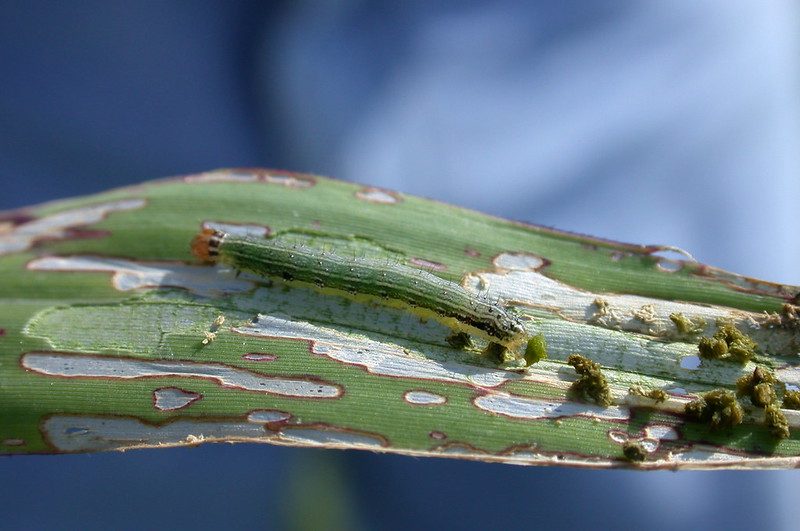
Photo Credit: uacescomm / Flickr / CC0 1.0
Your lawn needs to be in good shape while it takes a break from growing, and the last thing it needs is to be munched on by pests. Here are some to keep an eye out for in the fall:
Fall armyworms: These green or brown caterpillars with dark heads eat all types of turfgrass. Fall armyworms are especially problematic in new grass that’s been heavily fertilized in late summer. You may notice the adult moths fluttering around the area. Treat with pesticides, though remember these products may harm their natural predators.
Sod webworms: Adult tropical sod webworms peak in October and November. Their larvae feed on all types of warm-season grass leaves. Though this pest may leave during North Florida’s colder winters, the damage it creates in fall can leave your lawn in bad shape for the season. Keep thatch levels low to eliminate hiding spots and treat affected areas with insecticides.
White grubs: Yellow, easy-to-pull-up grass is a sign something is eating your turf’s roots, and the culprit may be white grubs. These beetle larvae target all kinds of turfgrass. Damage is easiest to spot in late summer and early fall. Apply treatment before they retreat underground later in the fall.
Contact the University of Florida’s Insect ID Lab for assistance if you find an insect and can’t identify it.
5. Treat Diseases
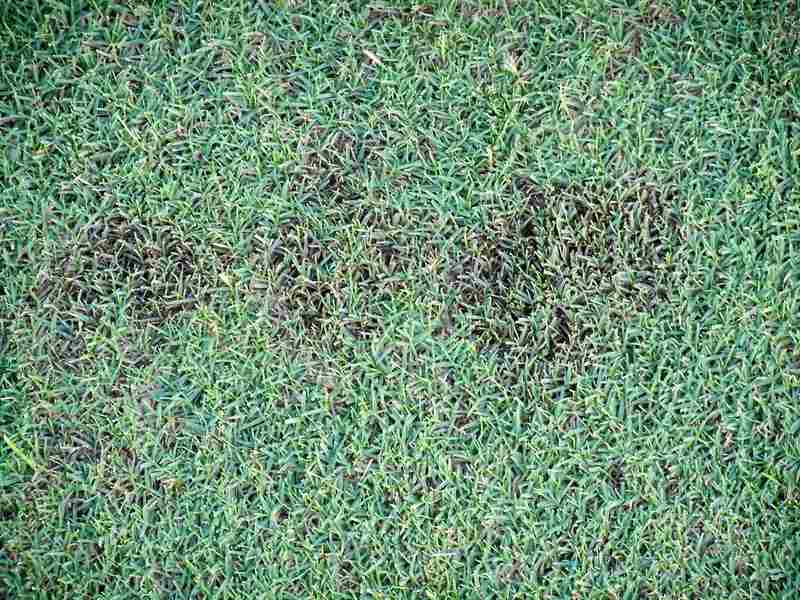
Photo Credit: Scot Nelson / Flickr / CC0 1.0
A slow-growing lawn may be less able to fight sickness, so treating diseases before they get out of hand is vital. Here are some diseases to watch for in the fall:
Large Patch
What to look for:
Also known as brown patch, this fungal disease creates round, discolored sections on turfgrass. It often affects Zoysiagrass and St. Augustinegrass, but all warm-season grasses can fall victim. Watch for it when temperatures are below 80 degrees Fahrenheit from November through May.
How to treat large patch:
Avoid overwatering and excessive nitrogen applications to discourage large patch. If necessary, treat with fungicides. Turfgrass can best recover when it’s actively growing in spring or summer.
Dollar Spot
What to look for:
Small, beige or white lesions on the grass will eventually cause straw-colored patches the size of a silver dollar or larger on your lawn. Dollar spot can affect any warm-season grass, especially lawns with dry soil and nitrogen deficiency.
How to treat dollar spot:
Maintain proper cultural practices like watering, mowing, fertilizing, dethatching, and aerating. Don’t mow the grass too low — your grass could become more vulnerable to dollar spot. Apply nitrogen fertilizer lightly and frequently to build resistance without overfertilizing. Use chemical control if cultural control is unsuccessful.
Gray Leaf Spot
What to look for:
St. Augustinegrass is the only warm-season grass that suffers from gray leaf spot. It slows growth and thins out lawns. Though this disease thrives most in rainy spring and summer, it extends into September since temperatures are between 80 and 90 degrees Fahrenheit. Look for light spots with dark brown borders on your grass’ leaves.
How to treat gray leaf spot:
Minimize stress and avoid over-watering to prevent the moist environment that this disease loves. Excessive nitrogen also can encourage gray leaf spot. Be careful when applying the herbicide atrazine, as it can worsen the disease. Fungicides are best applied preventatively, so consider them for next spring.
Helminthosporium Leaf Spot
What to look for:
Though this disease can strike any time of year, it’s most common during the mild, wet seasons of fall and winter. Helminthosporium leaf spot starts as brown or purple pin-sized spots and develops into lesions with pale centers. Infected leaves may turn purple or reddish brown before withering to a light tan shade. It can affect all warm-season grass types but is worst on bermudagrass.
How to treat Helminthosporium leaf spot:
Avoid excessive nitrogen applications by following soil test recommendations. A ratio of 1:2 for nitrogen and potassium is best. You also can apply slow-release or quick-release potassium to boost your grass’ resistance. Raise mowing height to help grass fight this disease. Several fungicide options are available if needed.
Pythium Root Rot
What to look for:
Pythium root rot causes discolored and thinning grass. Though it’s easiest to observe symptoms on the leaves, the root of the problem is underground and harder to see. Roots will be thin and discolored. All warm-season grasses can be affected by pythium root rot.
How to treat pythium root rot:
Improve drainage and avoid overwatering. To deal with the excess moisture from rainfall, mow high and avoid removing more than one-third of the grass blade at once so you don’t stress your turf. Balance nitrogen and potassium applications, with extra potassium in early fall for lawns commonly affected by pythium root rot. Apply fungicides if necessary.
Rust
What to look for:
The slow growth and cool weather in late fall to early spring encourage this disease, while warm weather drives it away. Wet leaves trigger the infection, which causes yellow dots that turn into orange pustules that release spores when touched. Look for rust in St. Augustinegrass, Zoysiagrass, and any lawn you overseed with perennial ryegrass.
How to treat rust:
Rust more severely affects grass with nutrient deficiencies or in shady areas. Follow soil test results to see what your grass needs, and apply a slow-release fertilizer. Keep the grass in shady areas as dry as possible. Use fungicides if cultural control isn’t sufficient.
Take-All Root Rot
What to look for:
Though it’s sometimes called Bermudagrass decline, take-all root rot affects all warm-season grasses. It is caused by stressed turfgrass and excessive rainfall and prevents grass from adequately absorbing water and nutrients. You may notice some leaf discoloration, but the black, rotten roots are the best way to identify the disease.
How to treat take-all root rot:
Alleviate stress and maintain proper mowing habits. An equal balance of slow-release nitrogen and potassium will help grass resist the disease. Micronutrients like manganese also may help. Keep in mind that the disease is hard to treat by the time symptoms are visible aboveground. Fungicides are most effective as a preventative measure.
6. Overseed With Cool-Season Grass
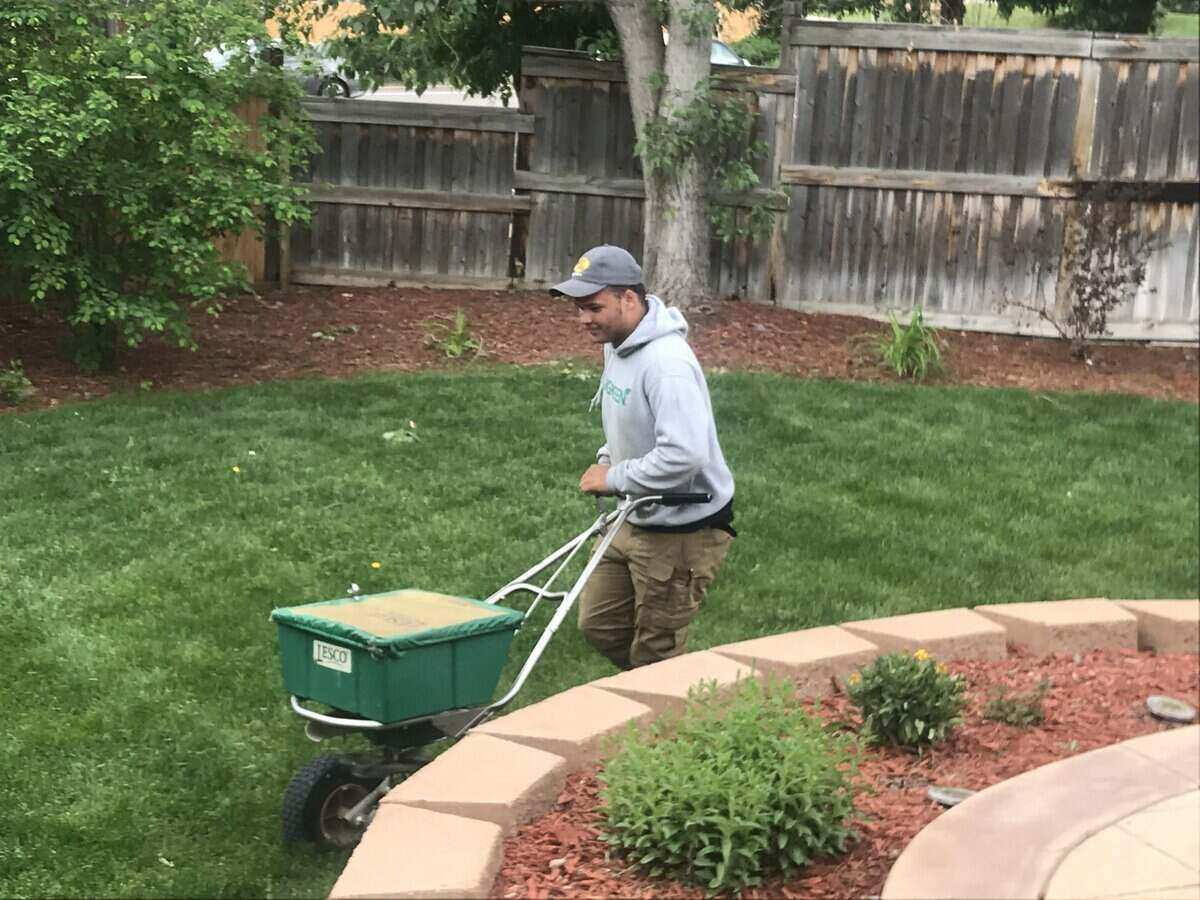
Photo Credit: Brenda Ryan / Wikilawn
While South Florida lawns may stay green all year, North Florida lawns usually turn brown during dormancy. If you want it to stay green, you could overseed with cool-season grass in fall.
Ryegrass grows fast, is cheap, and will die off in spring, so it doesn’t compete with your usual grass. You can overseed any warm-season grass except centipedegrass, as it could cause centipedegrass decline. Here are the steps you’d need to take:
- Wait until the high temperatures are in the low to mid-70s.
- Rake your lawn thoroughly to remove debris.
- Mow grass lower than you usually would, but don’t go lower than 3 inches for St. Augustinegrass.
- Remove grass clippings and any other debris so nothing will block the grass seed from the soil.
- Spread grass seed evenly using a broadcast seeder.
- Rake the ground with a stiff broom after sowing the seeds.
- Water for 10 to 20 minutes once or twice a day so the grass can germinate — it typically takes 7 to 10 days.
- Water daily for two to three weeks with about ¼ inch of water until seedlings are established.
- Maintain your grass as you normally would until spring.
Pro tip: Overseeding works best if you dethatched your lawn in spring.
Remember, if you choose this route, you’re signing up for extra lawn maintenance. You’ll need to water frequently while it germinates. Consider specialized turf paint if you want an easier way to keep your lawn green. Of course, the easiest option is to let nature take its course and wait out your brown lawn.
Warning: Pre-emergent herbicides can kill young ryegrass. Consider whether you’d prefer to overseed for winter color or deal with weeds.
7. Apply Fertilizer One Final Time
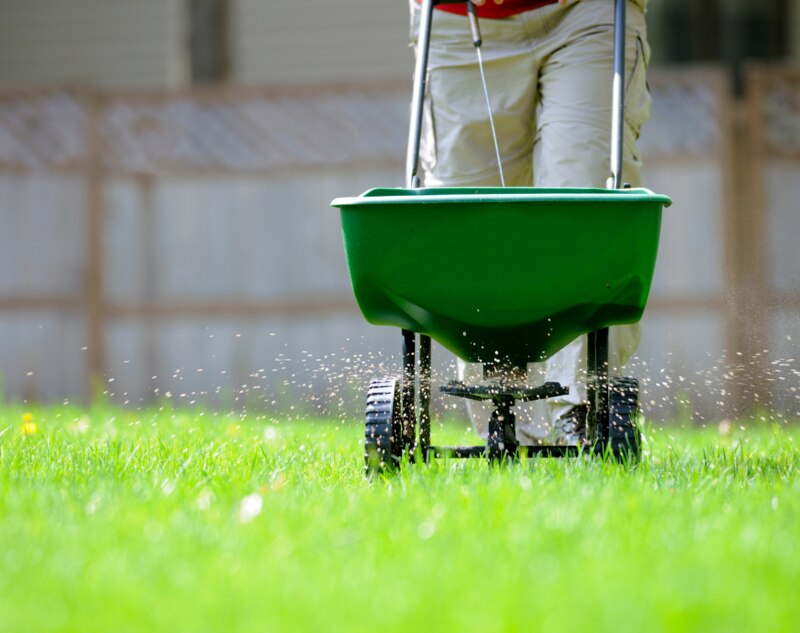
Photo Credit: groveb / Canva Pro / License
Your lawn can best utilize fertilizer when it’s actively growing in spring and summer. However, your grass may still benefit from a high-potassium fertilizer in fall. Fertilizers with slow-release nitrogen are better for your grass because they don’t release too many nutrients at once. Since many soils in Florida are high in phosphorus, use a fertilizer with little to no phosphorus.
Don’t fertilize your lawn any later than September. It could promote a growth spurt, and new growth will be more sensitive to cold. There’s no need to fertilize dormant grass, either.
Can you skip fall fertilization? Sure — just wait until spring. The spring application will help your grass recover from winter and start the growing season strong.
8. Get Ready for the Last Mow
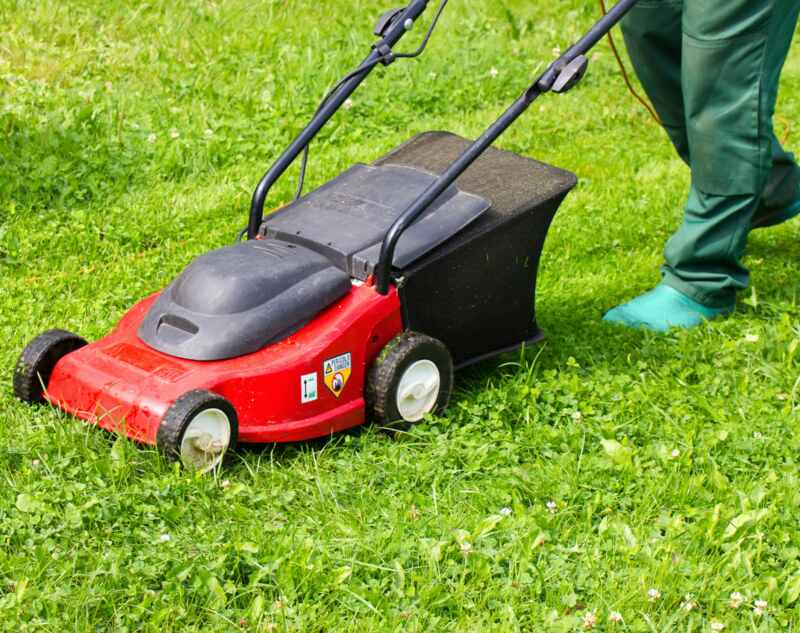
Photo Credit: lutavia / Canva Pro / License
Warm-season grass stops growing when air and soil temps are below 55 degrees Fahrenheit. While you may need to mow throughout the fall, the slowed growth means you’ll need to rev up the mower less and less frequently.
Though it may be tempting to mow low, your grass can better survive stressors if mowed high. Here are the recommended mowing heights for the grass types in Jacksonville:
| Grass Type | Mowing Height |
| Bahiagrass | 3-4 inches |
| Bermudagrass | 1-2 inches |
| Centipedegrass | 1.5-2 inches |
| St. Augustine | 2.5-4 inches |
| Zoysiagrass | 1-2.5 inches |
Only cut off one-third of the grass blade at a time. Removing more can damage grass and make it more susceptible to pests, diseases, and weeds. If you want to change your mowing height, it’s best to adjust it gradually.
9. Slow Down Irrigation
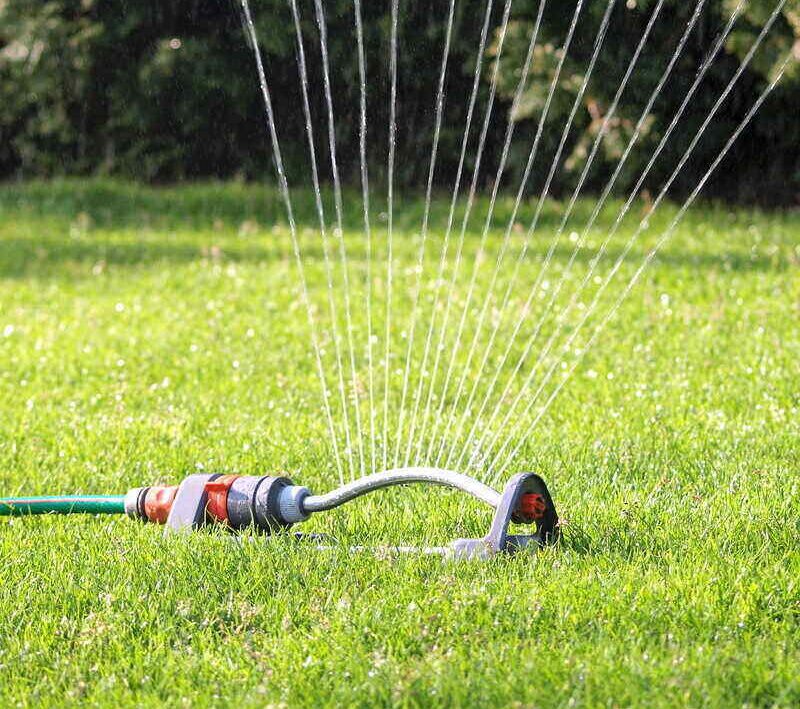
Lawns in Jacksonville generally need watering once or twice a week in the fall, but by winter, you can water as little as once every two to three weeks. Rain will provide for some of your grass’ needs. However, you’ll need to cover the rest with supplemental irrigation. Here are some watering tips:
- Irrigate with ½ to ¾ inch each time you water. Bermudagrass benefits from more water, so apply ¾ to 1 inch instead. Watering deeply and infrequently helps your lawn develop a healthy root system. You can measure how long it takes to apply that much by placing cans next to your lawn as you water.
- Irrigate in the early morning. This schedule allows the water to fully absorb before evaporating in the sun but also ensures your lawn isn’t wet and soggy for too long. Never water the lawn after 10 a.m.
- Don’t water when you see rain forecasted in the next 24 hours. That extra water won’t help your grass much and could even encourage pests, weeds, and diseases.
- Don’t water if temperatures will drop to 36 degrees Fahrenheit or below. Freezing temperatures can damage your grass, and water will make it worse. Temperatures most likely won’t drop this low in Jacksonville until November, but there’s a low chance in late October.
The University of Florida Institute of Food and Agricultural Sciences recommends irrigation on an as-needed basis to reduce overwatering. Look for the following signs of dehydration:
- Curled leaves
- Discoloration
- Footprints visible after you walk on the grass
10. Store the Tools You Won’t Need Until Spring
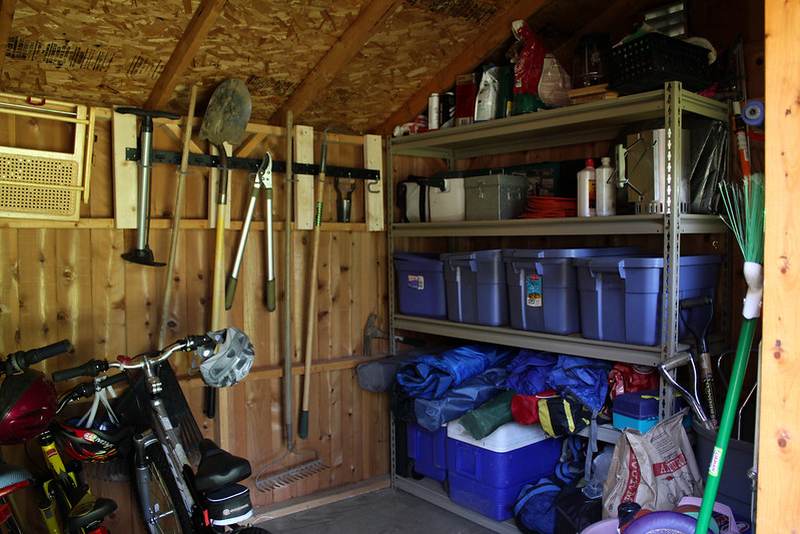
Photo Credit: woodleywonderworks / Flickr / CC BY 2.0
As the end of fall approaches, you may reach for your mower and weed eater less or not at all. If you’re ready to retire your equipment for the year, make sure it’s in good condition before you do so.
- Clean all dirt, grass, and debris off your tools
- Remove batteries
- Drain fuel
- Complete any necessary repairs
- Cover and store in a cool, dry place
Remember, you may still need these tools if you decide to overseed your lawn for winter color. It’s still a good idea to complete some maintenance, though.
FAQ for Fall Lawn Care in Jacksonville
Neither. Grass that’s too short can be vulnerable to diseases and weeds, while extra-long grass can look unruly and provide a haven for pests. Keep your grass in the middle, following the recommended mowing height for each grass type. It’s also best to mow your grass as you usually do for the last mow of the season.
It’s better to aerate your lawn in spring. Why? Though beneficial, aeration is an invasive procedure that your lawn needs time to heal from. Aerating in fall could leave your lawn weak going into winter. Wait until spring to get the best benefits and harm your lawn the least.
No. Winterizer fertilizer is a bad fit for Florida lawns because it often contains too much nitrogen. Instead, look for a low-nitrogen, high-potassium fertilizer. Here are some suitable NPK (nitrogen, phosphorus, and potassium) ratios:
• 9-2-24
• 5-2-14
• 8-2-34
• 5-0-22
No. These products are usually too general to meet the specific needs of different homeowners’ lawns. Like many cure-alls, it may not be as effective as advertised. The best way to fertilize and control weeds is to follow your soil test results and create a game plan based on the specific weeds you encounter.
How a Pro Can Help
Lawn care checklists are helpful, but they aren’t always fun. After all, you still have to haul out the lawn supplies and put reminders in your calendar for crucial tasks. Wouldn’t you rather spend your weekend trying the new fall flavors at Whit’s Frozen Custard? Consider professional lawn care services if you’d rather keep your free time free.
Main Photo Credit: Ventura Ave House / Ebyabe / Wikimedia Commons / CC BY-SA 3.0